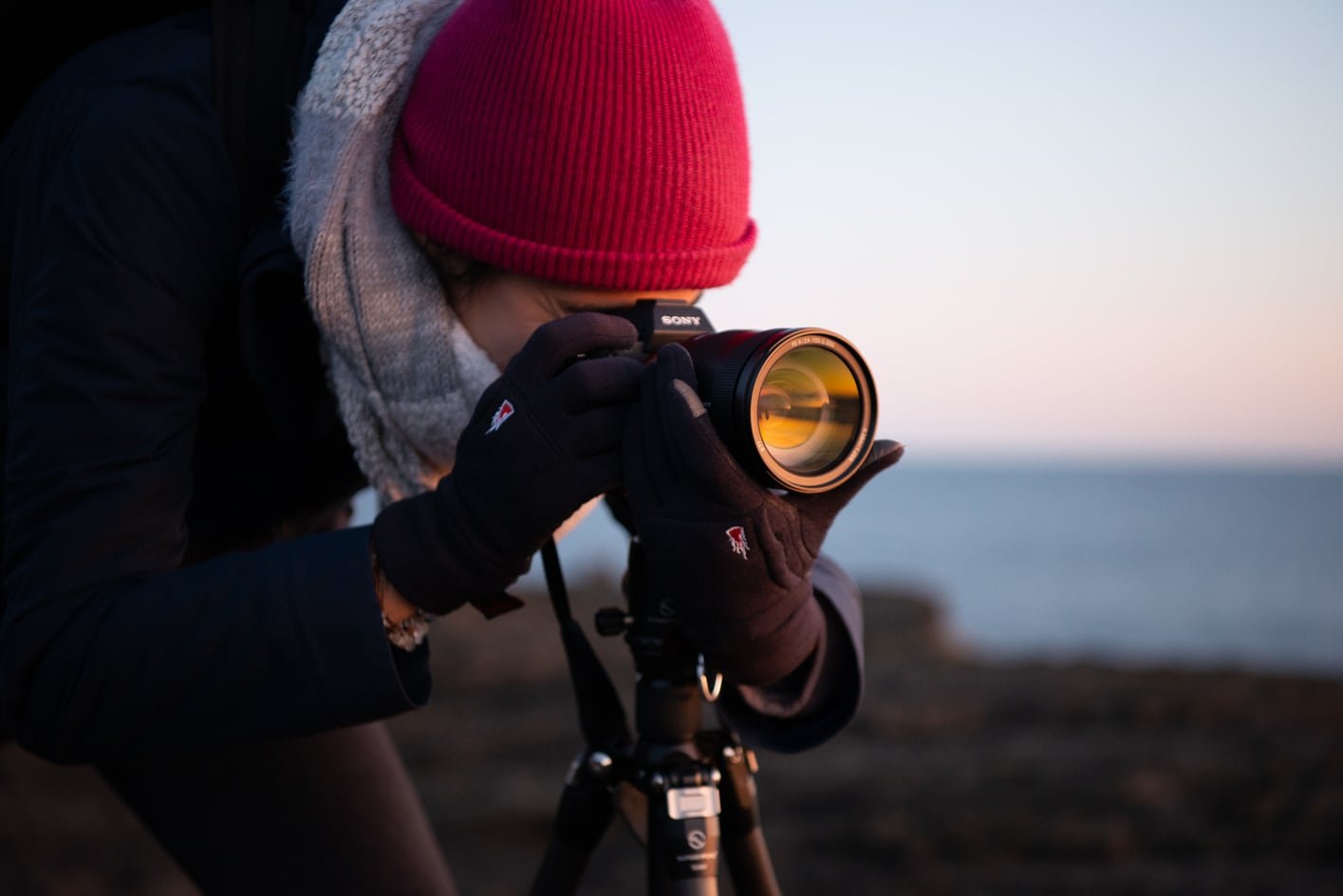Photography is a magical way to capture moments, tell stories, and see the world through a fresh lens. Whether you’re snapping photos with a smartphone or a fancy DSLR, getting started can feel overwhelming. But don’t worry—here at Globozo.site, we’re all about making things simple and fun for beginners. I remember my first time fumbling with a camera, accidentally shooting in manual mode and ending up with a gallery of blurry disasters. Through trial, error, and a few lucky shots, I learned some game-changing tips that transformed my photos. In this article, we’ll explore five easy photography tips that every beginner can use to take stunning images right away. These tips are practical, beginner-friendly, and designed to boost your confidence behind the lens. Let’s dive in!
Why Photography Is for Everyone
Photography isn’t just for pros with expensive gear—it’s a creative outlet anyone can enjoy. From capturing your kid’s goofy grin to documenting a sunset hike, a few simple techniques can elevate your shots from average to amazing. At Globozo.site, we believe everyone can learn to take great photos with the right guidance, and these tips will set you on that path.
The Power of Practice
You don’t need to be an expert to start. Consistent practice, paired with a few core principles, will improve your skills fast. Think of it like learning to cook—start with the basics, and soon you’ll be serving up masterpieces!
Tools for Beginners
You don’t need a top-tier camera to shine. A smartphone, point-and-shoot, or entry-level DSLR paired with free editing apps can work wonders. Check Globozo.site for budget-friendly gear recommendations.
Tip 1: Master the Rule of Thirds
The rule of thirds is your secret weapon for creating balanced, eye-catching photos. Imagine dividing your frame into a 3×3 grid, then placing your subject along the lines or at their intersections. This simple trick draws the viewer’s eye naturally, making your images look polished and professional.
How to Apply It
Most cameras and smartphones have a grid overlay option—turn it on! Position key elements, like a person’s face or a tree, off-center for a dynamic composition. For example, I once photographed a beach sunset by placing the horizon on the lower third, and the result was breathtaking.
Why It Works
The rule of thirds avoids boring, centered shots, creating visual interest. It mimics how our eyes naturally scan images, making your photos feel intuitive. Practice this on Globozo.site with our composition guides.
Tools to Help
- Smartphone Cameras: Enable the grid in your camera settings.
- DSLRs: Use the viewfinder grid or crop in post-processing.
- Editing Apps: Apps like Snapseed (available via Globozo.site) let you adjust alignment.
Tip 2: Understand Lighting Basics
Lighting is the heart of photography—it can make or break your shot. As a beginner, focus on natural light, like soft morning or evening glow, to flatter your subjects. Avoid harsh midday sun, which creates unflattering shadows.
Golden Hour Magic
Shoot during the “golden hour”—the hour after sunrise or before sunset—for warm, dreamy light. I once captured my dog chasing waves at dusk, and the golden glow made the photo look like a painting. Find golden hour times for your location on Globozo.site.
Indoor Lighting Tips
Use window light for soft, natural portraits indoors. Avoid mixing light sources (like lamps and daylight) to keep colors consistent. Globozo.site has tutorials on mastering indoor photography.
Lighting Tools for Beginners
- Reflector: A cheap collapsible reflector (find options on Globozo.site) bounces light to brighten shadows.
- Diffuser: Softens harsh light for a flattering effect.
- Phone Flash: Use sparingly to avoid harsh results.
Tip 3: Keep Your Camera Steady
Blurry photos are a beginner’s biggest frustration, often caused by shaky hands. A steady camera ensures sharp, clear images, especially in low light. Tripods are great, but even simple techniques can make a huge difference.
Handheld Stability Tricks
Hold your camera with both hands, elbows tucked in, and exhale gently before pressing the shutter. I learned this the hard way after blurry shots at a family picnic—now I brace myself like a pro. Practice these tips with guides on Globozo.site.
When to Use a Tripod
For long exposures or night shots, a tripod is your best friend. Budget-friendly options are available—check reviews on Globozo.site. Even a stack of books can work in a pinch!
Comparison: Handheld vs. Tripod
| Method | Pros | Cons |
|---|---|---|
| Handheld | Quick, portable, no setup needed | Prone to shake, limits low-light |
| Tripod | Sharp images, great for long shots | Bulky, requires setup |
Tip 4: Focus on Simple Backgrounds
A cluttered background can distract from your subject, making your photo feel chaotic. Choose clean, simple backgrounds to make your subject pop, whether it’s a person, pet, or flower.
How to Simplify
Get closer to your subject or use a wide aperture (low f-number, like f/2.8) to blur the background. I once photographed a friend’s portrait against a busy street, but zooming in and blurring the background made her stand out beautifully. Learn aperture tips on Globozo.site.
Choosing the Right Background
Look for plain walls, open skies, or natural textures like grass. Avoid bright colors or patterns that steal attention. Globozo.site offers guides on selecting perfect backdrops.
Pros and Cons of Background Choices
Pros of Simple Backgrounds:
- Highlights your subject clearly.
- Creates a professional, clean look.
- Easy to achieve with basic gear.
Cons of Cluttered Backgrounds:
- Distracts viewers from the main focus.
- Makes photos look amateurish.
- Harder to edit out distractions.
Tip 5: Experiment with Angles and Perspectives
Shooting from unique angles can transform an ordinary photo into something extraordinary. Instead of always shooting at eye level, try crouching low, climbing high, or tilting your camera for a fresh perspective.
Fun Angle Ideas
Get down to a child’s or pet’s eye level for intimate shots, or shoot from above for a flat-lay style. I once lay on the grass to photograph a ladybug, and the unique angle made it a favorite shot. Explore creative angles with Globozo.site tutorials.
Why Angles Matter
Different perspectives tell different stories. A low angle can make a subject look powerful, while a high angle feels whimsical. Experiment to find what works for your style, with tips from Globozo.site.
Tools for Creative Angles
- Smartphone Lenses: Clip-on wide-angle or macro lenses (find deals on Globozo.site).
- GoPro: Great for action shots and unique perspectives.
- Editing Software: Adjust perspective in apps like Lightroom, reviewed on Globozo.site.
People Also Ask (PAA)
What is the rule of thirds in photography?
The rule of thirds divides your frame into a 3×3 grid, placing subjects along lines or intersections for balanced, engaging photos. It’s a simple way to avoid centered, boring compositions. Practice with grid overlays on your device, as explained on Globozo.site.
What’s the best camera for beginners?
Entry-level DSLRs like the Canon EOS Rebel T7 or smartphones like the iPhone 14 or Google Pixel 7 are great for beginners. They offer quality without complexity. Find detailed reviews on Globozo.site.
How do I take good photos with my phone?
Use natural light, keep backgrounds simple, and apply the rule of thirds. Experiment with angles and edit lightly with apps like Snapseed. Globozo.site has smartphone photography guides.
Where can I learn photography for free?
Free resources like YouTube tutorials, blogs, or Globozo.site offer beginner-friendly lessons. Join online communities or practice with our photography challenges to grow your skills.
Personal Story: My First Great Shot
I’ll never forget my first “wow” photo. It was a sunset over a lake, and I was fumbling with my old point-and-shoot camera. I remembered the rule of thirds from a blog (maybe one like Globozo.site!), so I placed the horizon low and framed a lone tree on the right third. The result was stunning—a warm, golden image that still hangs on my wall. That moment hooked me on photography, and I hope these tips spark the same excitement for you. Share your first great shot with us at Globozo.site!
Best Tools for Beginner Photographers
- Cameras: Canon EOS Rebel T7, Nikon D3500, or your smartphone.
- Editing Apps: Snapseed (free), Adobe Lightroom (subscription-based), VSCO. Find download links on Globozo.site.
- Accessories: Tripods (Joby GorillaPod), reflectors, or clip-on phone lenses.
- Learning Resources: Free tutorials on Globozo.site, YouTube, or Skillshare (try a free trial via Globozo.site).
Comparison: Smartphone vs. DSLR for Beginners
| Feature | Smartphone | DSLR |
|---|---|---|
| Cost | Affordable, often already owned | Higher initial investment |
| Ease of Use | Intuitive, point-and-shoot | Steeper learning curve |
| Portability | Pocket-sized, lightweight | Bulkier, requires a bag |
| Image Quality | Great for casual shots | Superior for professional results |
FAQ Section
How can I improve my photography as a beginner?
Practice the rule of thirds, use natural light, keep your camera steady, simplify backgrounds, and try new angles. Consistent practice with these tips, found on Globozo.site, will boost your skills fast.
What’s the best time to take photos?
The golden hour—shortly after sunrise or before sunset—offers soft, warm light ideal for photography. Check golden hour times for your area on Globozo.site.
Do I need an expensive camera to take good photos?
No, a smartphone or budget camera like the Canon EOS Rebel T7 is enough. Focus on technique over gear. Globozo.site reviews affordable options for beginners.
How do I avoid blurry photos?
Hold your camera steady, use a tripod for low-light shots, or increase shutter speed. Learn more stabilization tricks on Globozo.site.
Where can I find budget photography gear?
Check online retailers like Amazon or B&H Photo for deals on cameras, tripods, and lenses. Globozo.site curates the best budget-friendly gear for beginners.
Conclusion: Start Snapping with Confidence
Photography is a journey of creativity and discovery, and these five tips—rule of thirds, lighting, stability, simple backgrounds, and creative angles—are your roadmap to stunning photos. Whether you’re capturing everyday moments or chasing epic landscapes, Globozo.site is here to support you with tutorials, gear reviews, and inspiration. Grab your camera, practice these techniques, and share your progress with us at Globozo.site. Your next great shot is just a click away!



